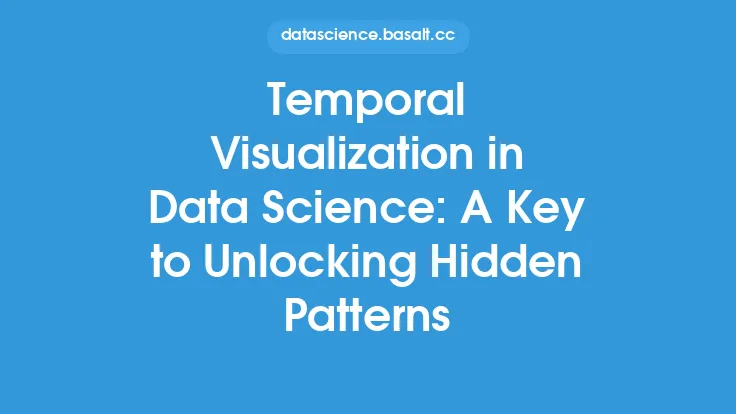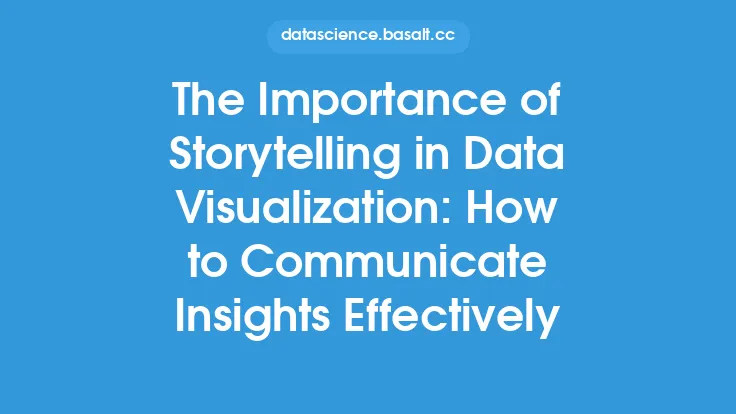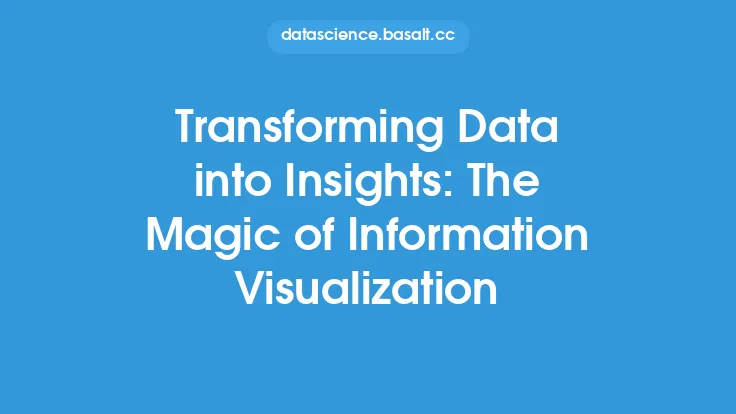The ability to effectively communicate complex data insights is a crucial aspect of data analysis, and information visualization plays a vital role in this process. By leveraging visual representations of data, individuals can quickly identify patterns, trends, and correlations that might be obscured in raw data. This, in turn, enables the extraction of meaningful insights, which can inform decision-making, drive business outcomes, and facilitate a deeper understanding of the underlying data.
Introduction to Information Visualization
Information visualization is a subset of data visualization that focuses on the use of interactive and dynamic visual representations to facilitate the exploration and understanding of complex data. It involves the application of various visualization techniques, such as charts, graphs, and maps, to communicate data insights in a clear and concise manner. The primary goal of information visualization is to enable users to quickly and easily understand the underlying data, identify patterns and trends, and extract meaningful insights.
Key Principles of Information Visualization
Effective information visualization is grounded in several key principles, including clarity, simplicity, and interactivity. Clarity refers to the ability of the visualization to clearly communicate the underlying data, without introducing unnecessary complexity or ambiguity. Simplicity involves the use of intuitive and easy-to-understand visual representations, which facilitate rapid comprehension and minimize cognitive load. Interactivity enables users to engage with the visualization, exploring different aspects of the data and drilling down into specific details.
Types of Information Visualization
There are several types of information visualization, each suited to specific use cases and data types. Some common types include:
- Static visualizations: These are non-interactive visualizations, often used in reports, presentations, and publications. Examples include charts, graphs, and maps.
- Interactive visualizations: These enable users to engage with the visualization, exploring different aspects of the data and drilling down into specific details. Examples include dashboards, interactive charts, and geographic information systems (GIS).
- Dynamic visualizations: These involve the use of animation, transitions, and other dynamic effects to communicate data insights. Examples include animated charts, interactive simulations, and data-driven videos.
Techniques for Effective Information Visualization
Several techniques can be employed to create effective information visualizations, including:
- Color encoding: This involves the use of color to encode specific data attributes, such as categories, values, or trends.
- Size encoding: This involves the use of size to encode specific data attributes, such as values or importance.
- Position encoding: This involves the use of position to encode specific data attributes, such as categories or trends.
- Motion encoding: This involves the use of motion to encode specific data attributes, such as changes over time or dynamic trends.
Tools and Technologies for Information Visualization
A wide range of tools and technologies are available for creating information visualizations, including:
- Data visualization libraries: These are software libraries that provide pre-built visualization components, such as D3.js, Matplotlib, and Seaborn.
- Data visualization platforms: These are software platforms that provide a comprehensive environment for creating and deploying visualizations, such as Tableau, Power BI, and QlikView.
- Geographic information systems (GIS): These are software systems that provide a comprehensive environment for creating and analyzing geospatial visualizations, such as ArcGIS, QGIS, and Google Earth.
Best Practices for Information Visualization
Several best practices can be employed to ensure the effective creation and deployment of information visualizations, including:
- Keep it simple: Avoid introducing unnecessary complexity or ambiguity in the visualization.
- Use intuitive visualizations: Select visualizations that are easy to understand and interpret.
- Provide context: Provide sufficient context to enable users to understand the underlying data and insights.
- Enable interactivity: Provide interactive features to enable users to engage with the visualization and explore different aspects of the data.
Common Challenges in Information Visualization
Several challenges are commonly encountered in information visualization, including:
- Data quality issues: Poor data quality can compromise the accuracy and reliability of the visualization.
- Data complexity: Complex data can be difficult to visualize effectively, requiring specialized techniques and tools.
- User engagement: Users may struggle to engage with the visualization, requiring interactive features and intuitive design.
- Scalability: Large datasets can be challenging to visualize, requiring specialized tools and techniques.
Future Directions in Information Visualization
The field of information visualization is continually evolving, with several future directions and trends emerging, including:
- Artificial intelligence (AI) and machine learning (ML): The integration of AI and ML techniques is enabling the creation of more sophisticated and interactive visualizations.
- Virtual and augmented reality (VR/AR): The use of VR/AR technologies is enabling the creation of immersive and interactive visualizations.
- Big data and analytics: The increasing availability of large datasets is driving the development of new visualization techniques and tools.
- Cloud computing: The adoption of cloud computing is enabling the deployment of visualizations at scale, with improved performance and collaboration.





